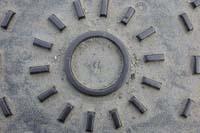Solve the first millennium problem

Chinese mathematicians Zhu Xiping and Kao Huaidong will receive a million dollars if it is shown that the proposed demonstration to clarify Poincaré's conjecture is valid. Or maybe don't give them the prize, but Russian mathematician Grigori Perelman. The controversy has arisen because Chinese work is based on Russian work.
But aside from author discussions, what is clear is that Poincaré's conjecture is very important in Mathematics. In the language of the street you can state: The 3-sphere is the only three-dimensional space borned without holes. But be careful, because sphere 3 is not the normal sphere of three-dimensional space (if we use a similar terminology it would be the 2-sphere), but the equivalent of a sphere in a four-dimensional space. Somehow, on the plane we have the circumference, in space the sphere, and in the fourth dimension, the 3-sphere.
Poincaré investigated the 3-sphere because he thought it was a valid model for determining the structure of the universe. In fact, Poincaré was a mathematician, but also a theoretical physicist, and one of those who along with Einstein developed the Theory of Relativity. According to the Theory of Relativity, ours is a space in four dimensions, with three spatial coordinates and a temporal coordinate. These four coordinates have some dependence, and the result of these dependencies is a visible three-dimensional space. The 3-sphere is a three-dimensional subspace of a four-dimensional space, and Poincaré thought that the universe has the appearance of a 3-sphere.
The field of mathematics that studies spaces such as 3-sphere and continuous transformations between them is called topology. Therefore, for a mathematician the sphere is a topological object of 3. If you take a small part of the normal sphere you see that it is a curved surface, that is, the sphere is locally two-dimensional. If we add a dimension, the 3-sphere is locally a three-dimensional space, but in its entirety in a four-dimensional space

lives and, like the normal sphere, is embroidered.
Whatever the author, if the demonstration is correct, Poincaré's conjecture becomes a theorem with all honors. In this way you can get an answer to the question that Poincaré himself asked in 1904.
Poincaré's conjecture is one of the seven main problems in the history of mathematics, and if it is shown that the demonstration has no errors, the first problem in this list can be solved. These seven problems were proposed by the Clay Mathematics Institute of the United States in 2000, the year in which the International Year of Mathematics was celebrated. Because of their importance, these problems were declared a Millennium Problem.
Buletina
Bidali zure helbide elektronikoa eta jaso asteroko buletina zure sarrera-ontzian











